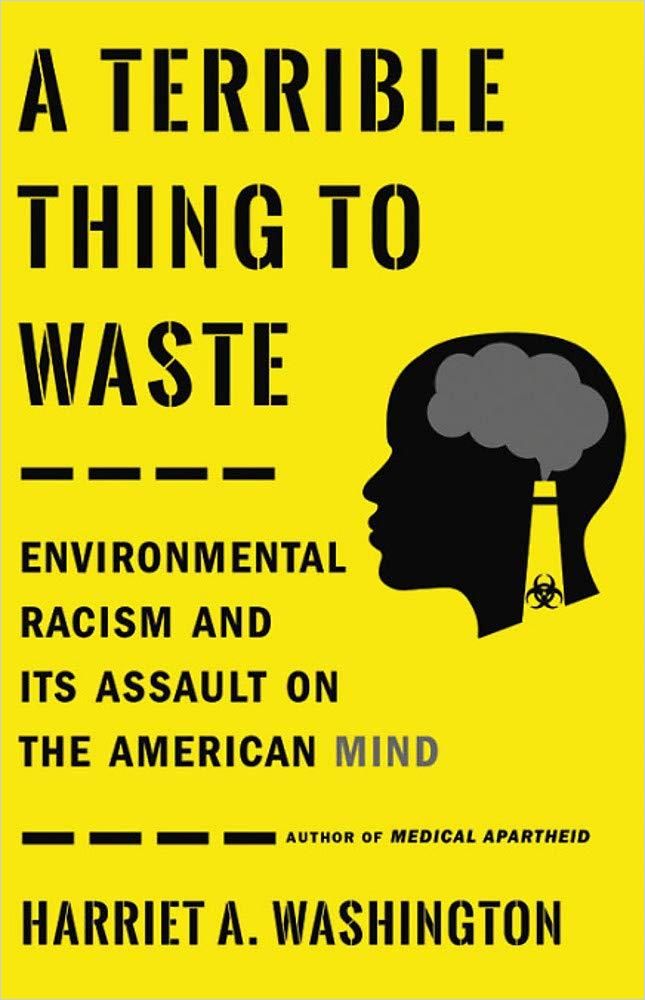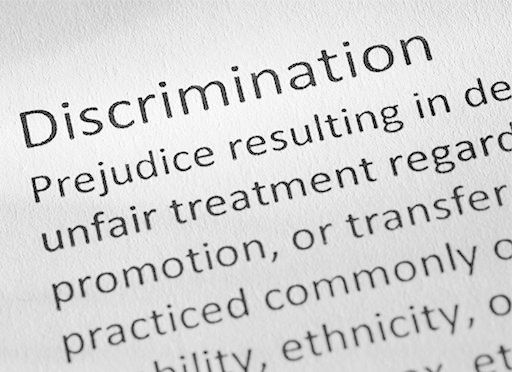National Book Critics Circle Award winner, medical ethicist Harriet A. Washington reveals startling correlations between proximity to pollution and lower intelligence.

Toxins, Disease and Intelligence
Medical ethicist Harriet A. Washington – winner of the National Book Critics Circle Award for Medical Apartheid – details how air pollution, untested industrial chemicals, toxic metals and infectious diseases damage children’s brains during early development. Washington illuminates how these factors exact a long-standing intellectual toll – and how that leads to behavioral problems, learning disabilities and decreased IQ – on communities of color. Washington details the history of United States’ bias and corporate greed. This edition also features a new preface regarding risks stemming from COVID-19.
Randy Cohen, the original author of The New York Times Magazine’s “The Ethicist” column, wrote that Washington, “… methodically indicts environmental racism and its catastrophic effects, particularly on the cognitive abilities of America’s children…” Shelf Awareness called this book, “Deeply researched, well written and timelier than ever,” and predicted that it “will necessarily transform public and scientific debates over urban decay, environmental policy and reported racial differences in IQ.”
Intelligence
Washington cites a long-standing 15-point gap between white and Black American IQ scores. She notes that hereditarians regard IQ as the ultimate measure of human intelligence and potential and see intelligence as unchangeable and inherited. In only one refutation of that notion, Washington details how when the US government added iodine to salt in 1924 to cure nutritional deficiencies, overall IQ increased by 15 points. Washington states that hereditarians ignore systemic racism in order to uphold the racist agenda that skin color dictates intelligence. As she reports, science clearly refutes them.
Race is a social construction, and although it has medical consequences, these too are socially driven. They are not definitive or determinative. In short, your medical condition tends to reflect the race to which you are perceived as belonging.Harriet A. Washington
Washington’s thesis is that Black and brown populations face de facto segregation in “sacrifice zones” bearing high concentrations of industrial chemicals, heavy metals and pathogens that lead to lower IQ.
Environmental Toxins
Washington discloses that 37,500 mostly African-American children in Baltimore tested positive for lead poisoning from 2003 to 2015. She explains that lead poisons people through emissions and through homes and water systems with legacy lead pipes.
Lead poisoning, Washington relates, causes illness, slow general growth, lowers IQ and can even lead to mental retardation, learning disabilities, reproductive issues, anemia, and heart and kidney problems. According to the CDC, no level of lead exposure is safe. Lead poisoning and its harmful effects, Washington shows, cost Americans 23 million IQ points annually.
African-American Communities
She reports the startling research finding that race is a more reliable indicator of where authorities will locate hazardous facilities and waste dumps than socioeconomic status or other markers.
The percentage of African-Americans in the ‘fence line zones’ near chemical plants is 75% greater than for the United States as a whole, and the percentage of Latinos is 60% greater.Harriet A. Washington
Washington provides the example of Flint, Michigan, a poor, predominantly Black city. Michigan governor Rick Snyder switched Flint’s water supply from treated Lake Huron water to water from the industrially polluted Flint River. Flint’s children, Washington says, will ultimately earn less than their unaffected peers, and will work in lower-status jobs. She underscores that authorities repeatedly told Flint residents their water was safe.
The author also discusses Louisiana, which produces 130 million tons of industrial waste and pollution, and dumps 64% of it in Black communities. Industry calls this area “the petrochemical corridor,” but residents know it as “Cancer Alley.”
Washington explains that the United States safety-tests only a small fraction of the more than 85,000 industrial chemicals currently in use. Therefore, neurotoxins such as manganese; pesticides like chlorpyrifos and DDT; tetrachloroethylene (TCE); and the flame-retardant chemicals polybrominated diphenyl ethers (PBDEs) remain common in the environment. Even small exposures, Washington asserts, can cause behavioral and intellectual damage.
Children and Fetuses
Washington points out that while African-American and Hispanic children are most vulnerable to toxins in dust and soil, baby food itself is the source of the greatest hazard for exposure to arsenic and lead for all American babies.
Children two years old or younger have twice the relative body surface as an adult. Because absorption through the skin is a common route of many poisons, such as aromatic hydrocarbons, this multiplies the youngest’s exposure.Harriet A. Washington
Washington explains that doctors often blame Black mothers for adverse birth outcomes despite the environmental hazards that abound in buildings, food and water in poor neighborhoods. Many Black communities, she cautions, lack the regular trash removal, air conditioning and environmental protections that lower infection rates.
Infectious disease, Washington advises, highly correlates with lower IQ scores and may be a main cause of the variation in intelligence globally; pathogens and lower intelligence are profoundly linked.
Washington insists that improving environmental safety demands political will. She closes by reminding readers that only the impetus of many united people can force government to clean up the environment.
Granular Refutation
This book is a groundbreaking call to action and a granular refutation of many foundational racist arguments regarding the innate intelligence differences among white and Black and brown Americans. Washington writes with impassioned, informed heartbreak and outrage about the destruction wrought by petrochemical, medical and industrial indifference to the effect of their waste products and outputs. Page after page features stunning statistics and examples of how America’s poor are subject to conditions that almost guarantee that they will make up a permanent underclass. Washington offers this material with grace and an accessible voice that explains even the most arcane aspects of pollutants and disease. Students, politicians, activists, medical personnel, NGOs and ordinary citizens can benefit from her rigorous research and calm, clear voice.
Washington’s other works on race and medical ethics include Deadly Monopolies and Infectious Madness. Parallel reads might include Mediocre by Ijeoma Oluo and Just Medicine by Dayna Bowen Matthew.








